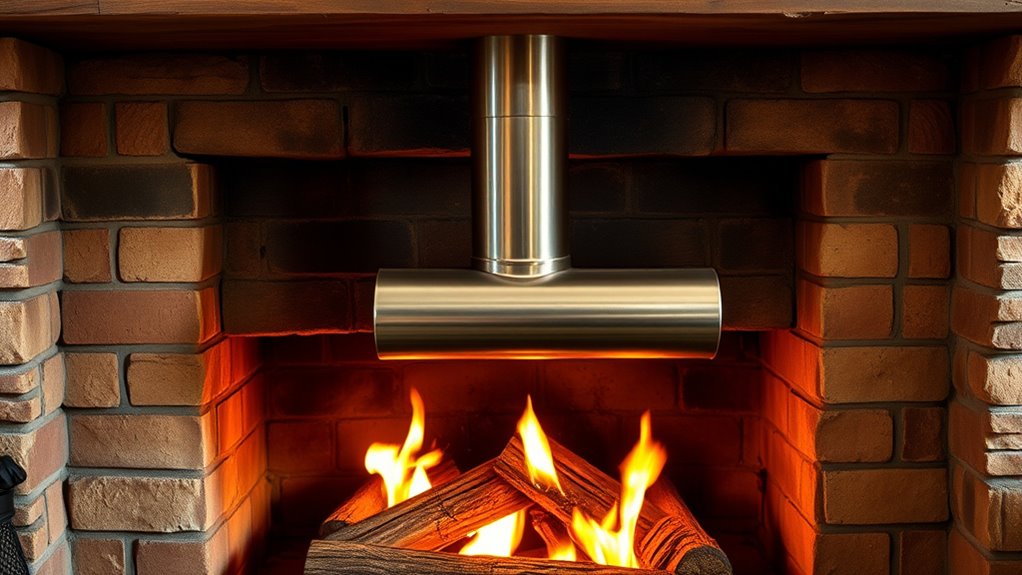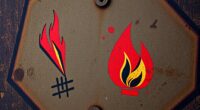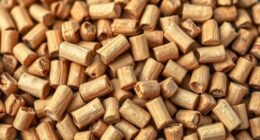To choose the right flue and chimney for safety, consider your fireplace or appliance’s fuel type, size, and placement. Masonry chimneys offer durability but need more space and regular maintenance, while metal flues are easier and cheaper to install. Proper sizing, insulation, and sealing are crucial to prevent leaks, creosote buildup, or dangerous gases. Matching your chimney’s specifications with your appliance ensures safe, efficient operation—keep exploring to find the best options for your home.
Key Takeaways
- Select a chimney type that matches your appliance’s fuel and venting requirements for safe and efficient operation.
- Ensure proper sizing and installation to prevent leaks, blockages, and dangerous buildup of combustion byproducts.
- Use durable, suitable materials like ceramic liners or stainless steel to withstand environmental stresses and heat.
- Incorporate adequate insulation and sealing to prevent heat loss, drafts, and potential fire hazards.
- Consult professionals to verify compatibility, proper height, and placement, minimizing risks like downdrafts and carbon monoxide leaks.

Selecting the right flue and chimney is essential to guarantee safe and efficient venting of your fireplace or stove. Your choice impacts how well the combustion byproducts are expelled, preventing dangerous buildup of smoke or gases inside your home. One of the first considerations is understanding your ventilation options. Depending on your setup, you might opt for a traditional masonry chimney, a prefabricated metal flue, or specialized venting systems designed for modern appliances. Each option has its advantages and limitations, so evaluating your needs carefully ensures proper airflow and safety. Masonry chimneys are durable and can handle high heat, but they require more space and maintenance. Prefabricated metal flues are easier to install and often more cost-effective, making them suitable for many homes. Whichever option you choose, ensure that the venting system is appropriately sized and installed to match your specific appliance’s requirements.
As you appraise chimney material selection, you must consider the durability, heat resistance, and compatibility with your home’s structure. Clay or ceramic liners are common in masonry chimneys, providing excellent heat resistance and corrosion protection. Metal chimneys, often made from stainless steel or aluminum, are lightweight and resistant to rust, but they must be rated for high temperatures. When selecting chimney material, think about the climate and the type of fuel you use, as these factors influence how well the chimney withstands environmental stresses and chemical reactions. Proper material selection not only prolongs the lifespan of your chimney but also maintains the integrity of the venting system, reducing risks of leaks, cracks, or blockages. Additionally, considering the insulation and sealing of the chimney can enhance safety and efficiency by preventing heat loss and drafts.
Another key aspect of choosing the right flue and chimney involves matching the chimney’s specifications with your appliance’s venting needs. Different fuel types, such as wood, gas, or pellet stoves, require different venting configurations. For example, wood-burning fireplaces generate more creosote and require a chimney with a smooth interior surface and sufficient diameter to prevent buildup. Gas appliances often have specific venting standards to ensure safe exhaust of combustion gases. You should also consider the chimney’s height and placement to ensure proper draft and prevent downdrafts or backflow of smoke. Proper ventilation options and careful chimney material selection work together to optimize safety, efficiency, and longevity of your heating system. When in doubt, consulting with professionals can help you choose the best combination for your home, ensuring your fireplace or stove operates safely and effectively for years to come.
Frequently Asked Questions
How Often Should I Inspect My Chimney for Safety?
You should inspect your chimney at least once a year for safety. Regular chimney maintenance and safety inspections help catch creosote buildup, blockages, or damage early, preventing fires or carbon monoxide leaks. If you use your fireplace more frequently or notice issues like smoke backing up, consider inspecting it more often, say every few months. Staying proactive keeps your home safe and makes certain your chimney functions efficiently.
Can I Install a Chimney Liner Myself Safely?
You can install a chimney liner yourself, but safety should be your top priority. Proper chimney maintenance and DIY chimney repair require careful planning, precise measurements, and adherence to safety standards. If you’re comfortable with DIY projects and have some technical skills, follow manufacturer instructions closely. However, if you’re unsure, it’s best to consult a professional. Proper installation guarantees safety and efficiency, preventing potential hazards down the line.
What Are the Signs of a Failing Chimney?
You’ll notice signs of a failing chimney if you see chimney corrosion or smoke leakage around your home. Corrosion weakens the structure, increasing fire risks, while smoke leakage indicates cracks or blockages that prevent proper venting. Additionally, if you detect an unpleasant smell or see soot buildup, these are signs your chimney needs inspection. Regular checks help catch issues early and keep your home safe.
Are There Eco-Friendly Chimney Options Available?
Are you curious about eco-friendly chimney options? You can opt for green chimney materials like recycled metal or clay, which reduce environmental impact. Some models feature high-efficiency designs that lower emissions and conserve energy. Have you considered a pellet stove or wood-burning system with advanced emissions controls? These eco-friendly choices help you stay warm while being kinder to the planet, making your home both cozy and sustainable.
How Do I Choose a Chimney Size for My Appliance?
To choose the right chimney size, focus on your appliance’s flue diameter to guarantee proper venting and safety. Select a chimney material that withstands your fuel type and heat levels, like stainless steel or clay. Measure your appliance’s flue outlet accurately, then match it with a chimney that has a compatible diameter. This ensures efficient smoke removal and reduces fire risks, keeping your home safe and compliant.
Conclusion
Now that you understand the importance of selecting the right flue and chimney, you’re one step closer to ensuring your home’s safety. But remember, not all options are created equal, and making the wrong choice could have serious consequences. Are you prepared to make the best decision? The key lies in understanding your specific needs and staying vigilant. The right choice could mean the difference between peace of mind and unforeseen danger—are you ready to find out which is which?











